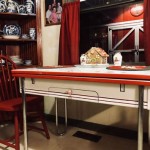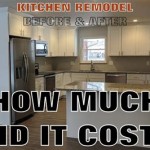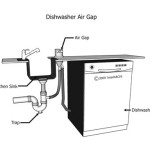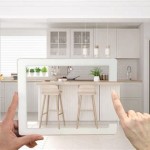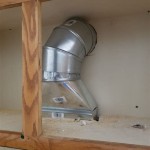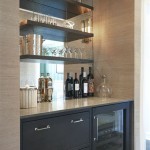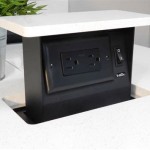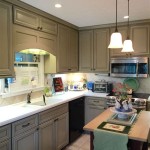Designing The Perfect Ultra Modern Kitchen Design
The ultra-modern kitchen embodies a design philosophy centered on sleek aesthetics, cutting-edge functionality, and efficient use of space. Achieving the perfect ultra-modern kitchen requires a careful consideration of materials, layout, technology integration, and a commitment to minimalist principles. The goal is to create a visually stunning and highly practical space that reflects a contemporary lifestyle.
The design process starts with understanding the user's needs and preferences. Factors like cooking habits, entertaining style, and family size all contribute to the ideal kitchen design. A detailed assessment of the existing kitchen space, if applicable, is also crucial. This assessment includes measuring dimensions, identifying structural limitations, and evaluating the existing plumbing and electrical systems. Once the groundwork is laid, the selection of appropriate design elements can begin.
Prioritizing Clean Lines and Minimalist Aesthetics
At the heart of ultra-modern kitchen design is the principle of minimalism. This translates to clean, uncluttered surfaces, hidden storage solutions, and a deliberate avoidance of ornate details. Simplicity is key, with designs often featuring flat-panel cabinetry, integrated appliances, and streamlined hardware. The objective is to create a sense of spaciousness and visual harmony.
Color palettes in ultra-modern kitchens tend to be restrained, often centering around neutral tones such as white, gray, and black. These colors provide a sophisticated backdrop that allows the materials and textures to take center stage. Accents of bolder colors can be incorporated through accessories, artwork, or strategically placed lighting to add visual interest without disrupting the overall minimalist aesthetic.
The choice of materials plays a vital role in achieving a minimalist look. Popular choices include high-gloss lacquer, stainless steel, glass, and engineered stone. These materials offer a clean, contemporary appearance and are also durable and easy to maintain. The key is to select materials that complement each other and contribute to the overall sense of visual consistency.
Lighting is another crucial element in creating a minimalist atmosphere. Recessed lighting, under-cabinet lighting, and pendant lights are commonly used to provide ample illumination without cluttering the space. The placement of light fixtures should be carefully considered to highlight key features and create a balanced and inviting ambiance.
Integrating Smart Technology and Innovative Appliances
Modern kitchens are increasingly incorporating smart technology to enhance functionality and convenience. This integration can range from simple features like smart lighting and automated faucets to more complex systems like voice-controlled appliances and integrated entertainment systems. The goal is to create a kitchen that is not only visually appealing but also highly efficient and user-friendly.
Smart appliances offer a range of features that can simplify cooking and food preparation. Refrigerators with built-in cameras allow users to monitor their food supplies remotely, while ovens with pre-programmed cooking modes can automate the cooking process. Induction cooktops offer precise temperature control and are also safer to use than traditional gas or electric cooktops.
Beyond appliances, smart technology can also be integrated into other aspects of the kitchen design. Automated lighting systems can adjust the brightness based on the time of day or the task being performed. Smart faucets can dispense water at a specific temperature and volume, reducing water waste. Integrated sound systems can provide entertainment while cooking or cleaning.
The integration of smart technology should be seamless and intuitive. The goal is to enhance the user experience without adding unnecessary complexity. A well-designed smart kitchen should be easy to use and maintain, even for users who are not technically savvy.
Optimizing Space and Functionality with Thoughtful Layout Design
A well-designed kitchen layout is essential for maximizing space and functionality. The layout should be tailored to the user's specific needs and preferences, taking into account factors like cooking style, traffic flow, and storage requirements. The goal is to create a space that is both efficient and comfortable to work in.
Several common kitchen layouts are suitable for ultra-modern designs, including the L-shaped, U-shaped, galley, and island layouts. The choice of layout will depend on the size and shape of the kitchen space, as well as the user's individual needs. An L-shaped layout is ideal for smaller kitchens, while a U-shaped layout offers ample counter space and storage in larger kitchens. Galley kitchens are efficient for narrow spaces, and island layouts provide a central work area and social gathering point.
In addition to the overall layout, the placement of appliances and work zones should be carefully considered. The work triangle, which connects the sink, refrigerator, and cooktop, is a fundamental principle of kitchen design. The goal is to minimize the distance between these three key areas to reduce unnecessary steps and improve efficiency.
Storage solutions are also crucial for optimizing space and functionality. Ultra-modern kitchens often feature clever storage solutions like pull-out shelves, drawer dividers, and pantry organizers. These features help to maximize the use of available space and keep the kitchen clutter-free. Integrated storage solutions, where appliances and storage units are seamlessly integrated into the cabinetry, are also popular in ultra-modern designs.
The countertop material also contributes to the kitchen's functionality. Durable and easy-to-clean materials like quartz, granite, and stainless steel are common choices. The countertop height should be comfortable for the user, and the depth should be sufficient for food preparation and other tasks.
Ventilation is an often overlooked, yet critical, aspect of kitchen design. A powerful range hood is essential for removing smoke, odors, and grease from the air. The range hood should be properly sized for the cooktop and vented to the outside to ensure effective ventilation.
Finally, accessibility should be considered in the design process. Universal design principles, which aim to create spaces that are accessible to people of all abilities, can be incorporated into the kitchen design. This includes features like adjustable-height countertops, pull-down shelves, and easy-to-grip handles.
By carefully considering these factors, it is possible to create an ultra-modern kitchen that is not only visually stunning but also highly functional and user-friendly. The principles of minimalism, smart technology integration, and thoughtful layout design are all essential for achieving the perfect ultra-modern kitchen.

Best Luxury Kitchen Designs Ideas Modern Style Oppein

Ultra Modern Kitchen Designs Appliances Albany Kitchens

Best Luxury Kitchen Designs Ideas Modern Style Oppein

Modern Kitchen Ideas Oppolia

Best Luxury Kitchen Designs Ideas Modern Style Oppein

Best Luxury Kitchen Designs Ideas Modern Style Oppein

16 Modern Kitchen Design Ideas For Your Home

Best Luxury Kitchen Designs Ideas Modern Style Oppein

50 Luxury Modern Kitchen Design Ideas That Will Inspire You

Top Modern Kitchen Design Styles In For 2025 Laurysen Kitchens
Related Posts

